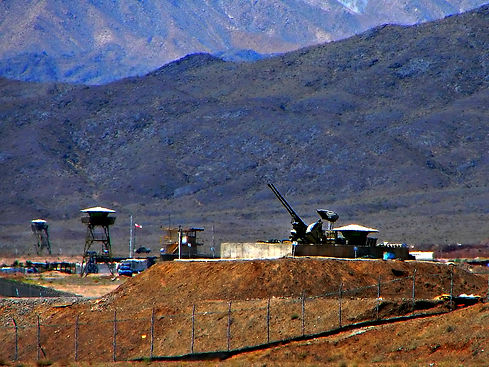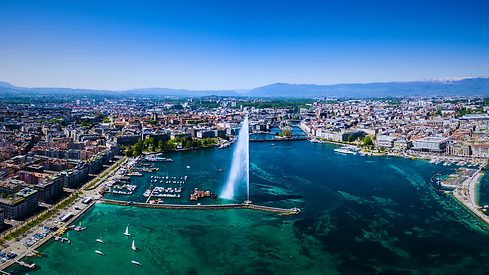

Operation Midnight Hammer
The Gloves Are Off: What the U.S. Strike on Iran’s Nuclear Sites Really Means
by Lynn Miteva


Stealth at Dawn: Iran Outfought
Elite Platform, Elite Crew: Seven B-2 Spirit stealth bombers—each with two highly trained pilots—launched from Whiteman AFB, Missouri, on June 21, 2025, embarking on an 18-hour round-trip sortie covering over 7,000 nautical miles.
Perfect Deception: A decoy package veered west into the Pacific to fool radar nets, while the main strike force maintained radio silence and minimal comms heading east—no Iranian AWACS, no SAM batteries, no Quds-1 fighters tracked them.
Seamless Integration: In-flight refuelings (four boom hookups per bomber), ISR handoffs with drones, tanker tracks choreographed to the minute—this joint force ballet spanned USSTRATCOM, TRANSCOM, CYBERCOM, SPACECOM, SPACE FORCE, and EUCOM.
Submarine Hammer: At 5:00 PM EST (2:30 AM Tehran, June 22), a guided-missile submarine loosed 24 Tomahawk cruise missiles on Esfahan’s critical nodes—paving the way and preserving tactical surprise.



Precision Punishment: Between 6:40 PM and 7:05 PM EST, B-2s unleashed 14 GBU-57 Massive Ordnance Penetrators—30,000-pound bunker-busters—on Fordow and Natanz, obliterating all three nuclear sites in under 25 minutes.
First Operational Use: The GBU-57 saw its combat debut, validating its hypersonic penetrator design against hardened targets.
Zero Counter-Fire: No missiles launched. No interceptors scrambled. Iran’s sophisticated RADAR and infrared nets failed—total EMCON discipline won the day.
Record-Setting Scale: Over 125 US aircraft—fighters, tankers, ISR platforms—and hundreds of support personnel made this the largest B-2 strike package ever and the second-longest mission flown (only eclipsed by post-9/11 ops).
Rapid Strategic-to-Tactical Execution: From White House orders to global strike in mere weeks—demonstrating unmatched American military agility and coordination.

What to Know About Iran’s Nuclear Sites?
-
Natanz Enrichment Site: Iran’s largest uranium enrichment complex (~220 km SE of Tehran), enriching uranium up to 60% before repeated Israeli covert strikes. Began early 2000s; exposed in 2002. Targeted by Stuxnet cyberattack (2009–2010) and bombings (2020, 2021).
-
Fordow Facility: Built ~2006–2007 near Qom, revealed in 2009 after U.S.-led intel exposed it. Deeply buried, requires “bunker buster” bombs like the 13,600-kg GBU-57. Still active in 2025 despite JCPOA goals to convert it into an isotope facility with Russian help.
-
Bushehr Nuclear Power Plant: First nuclear reactor in the Middle East. Originally started by Siemens in 1975; completed by Russia (Rosatom) in 2011 with a VVER‑1000 reactor. Russia supplies and removes nuclear fuel.



Isfahan Nuclear Center: Hosts uranium conversion, fuel fabrication, and 3 Chinese-supplied research reactors. Dates back to 1984 with Chinese backing.
Foreign Personnel:
-
Russian Scientists: 200+ Rosatom employees at Bushehr as of June 2025; many evacuated post-strikes.
-
Chinese Scientists: Thousands of Chinese scientists employed; number unspecified.
Medvedev’s Statement (June 2025): Hinted at possible nuclear warhead transfers to Iran.
Araghchi’s Visit to Moscow (June 2025): Signaled intensified Russia-Iran nuclear talks.
Russia and China’s nuclear footholds in Iran now at risk. I

Geneva Talks Are Theater—EU Eyes Iranian Oil, Not Nukes
The EU’s latest talks with Iran aren’t about stopping a bomb—they’re about replacing Russian gas. Behind the nuclear script, Brussels is reviving INSTEX—its sanctions workaround built to bypass U.S. restrictions—and quietly offering Tehran market access, reactivated contracts, and unfreezing of blocked funds.
With REPowerEU mandating a Russian energy cutoff by 2027 and new contracts banned after 2025, Iran’s oil and gas are back in play.
The U.S. isn’t at the table—but it’s watching. Washington knows the EU is sidestepping American pressure, using these talks to quietly re-enter Iran’s energy sector.
European diplomats are pushing “strategic autonomy,” signaling they’ll act with or without U.S. approval.
Meanwhile, France has angered Israel by blackballing Israeli defense exhibitors at the Paris Air Show, highlighting growing rifts within Western alliances amid the Middle East turmoil.



The Gloves Are Off: What the U.S. Strike on Iran’s Nuclear Sites Really Means
The bombs that hit Iran’s nuclear infrastructure this week weren’t just targeting centrifuges. They struck at the heart of a world that thought America had gone soft.
Here’s who got the memo, and what it really said:
To Europe: "You don’t run this table." Message: “We, not the EU, set the limits of diplomacy and force in the Middle East. Your Geneva talks are theater—we’re making real decisions.”
Translation: The U.S. just torpedoed the EU’s quiet efforts to build energy and diplomatic ties with Iran—a warning: “Don’t go rogue.”
It’s a slap at EU attempts at strategic autonomy and backchannel oil diplomacy. Also: “If you try to cut side deals with Tehran, we can make them irrelevant overnight.”

To China: "Stay in your lane"
Message: “Your $400B Iran deal, Belt & Road dreams, and BRICS plans don’t give you veto power. ”
Translation: The U.S. warns Beijing that Iran is not in their exclusive sphere, no matter how many infrastructure or oil deals they sign. It signals that U.S. hard power trumps Chinese soft power — and that even China-backed regimes can be punished without hesitation.
It’s also a flex before a potential Taiwan escalation: “If we’re willing to strike nuclear sites in Iran, don’t bet we’ll stay passive elsewhere.”
To Russia: "Russia "Don’t use Iran to destabilize Europe—we’ll break your tools."
Message: “We know you want Iran to pressure the West via oil markets, Syria, Lebanon, and Red Sea chaos. But if you push too far—we’ll strike your proxies too.” Translation: The U.S. sees Russia using Iran as a geopolitical tool to distract and fragment NATO and EU focus.
Bombing nuclear sites sends the message: “We can neutralize your pressure points.” It’s also about denying any Russian-Iran nuclear cooperation or missile tech transfer routes.

.png)

To Iran: "You’re close to the line—and we’ll move it if we want." Message: “We’re not going to wait for a nuke test or a red line. If we think you’re getting close, we strike. No warnings.” Translation: This is not about enrichment levels or centrifuge counts — it’s about regime containment. The U.S. isn’t playing the JCPOA game anymore.
Gulf Powers (Saudi, UAE, Qatar): Forced to Pick a Side
What U.S. strikes told them:
“You can’t hedge forever between BRICS and Washington. If things go hot, we’ll remember who sat on the fence.”
Changes already underway:
Saudi Arabia:
Realizes BRICS can’t protect it from Iran or Houthis.
Quietly reviving military coordination with CENTCOM.
Deals with China still exist—but U.S. energy-security tether is being rebuilt.
UAE:
Pulling away from China-Iran triangulation.
Offering bases and overflight in exchange for tech and counter-drone deals.
Qatar:
Staying slippery, but now worried the U.S. will punish ambiguous allies.
Gas leverage only works if U.S. LNG isn't being used as a sword.

The Last Decade Was a Humiliation
Cold Fact: A Weaker U.S. Made the World Worse
For a decade, America let itself get outmaneuvered, outplayed, and outright mocked. While we argued about pronouns and tore ourselves apart over cable news soundbites, our rivals cashed in.
A weaker, quieter America didn’t lead to peace, growth, or balance.
It led to a global mess and free-for-all.
Every major player picked our pockets—China drained our industries, Russia spread wars, Europe hid behind our military while chasing dirty energy deals, and the Global South took U.S. development money—then voted with China/Russia at the UN.
Demanded debt forgiveness, then signed BRI or Russian defense deals.
Cried colonialism, but embraced authoritarian donors.
But did the world thrive? Hell no. It got darker, poorer, and bloodier. Wars exploded, dictators flourished, and rogue states ran wild.
Now that the U.S. is showing teeth again, it’s a shock to the system.
The U.S. isn’t “back.” It’s rearmed, pissed off, and playing for keeps. There’s no reset button.



The Era of Sugarcoated Multilateralism Is Dead
BRICS, once hyped as the anti-West bloc, is exposed as a paper tiger—fractured, leaderless, and useless when real firepower hits.
China’s slow-burn Taiwan strategy just hit a wall; the U.S. red line is no longer theoretical—it’s sharp, deployed, and enforced.
Gulf states can no longer hedge between empires; in a kinetic world, neutrality is a lie, and Washington is done tolerating fence-sitters.
The myth of a fading American empire has collapsed—when the gloves come off, U.S. dominance isn’t just back, it’s surgical, unapologetic, and lethal.
We’re in a new 1983, with drones, chips, and algorithms replacing tanks and walls—but the rules are just as brutal.